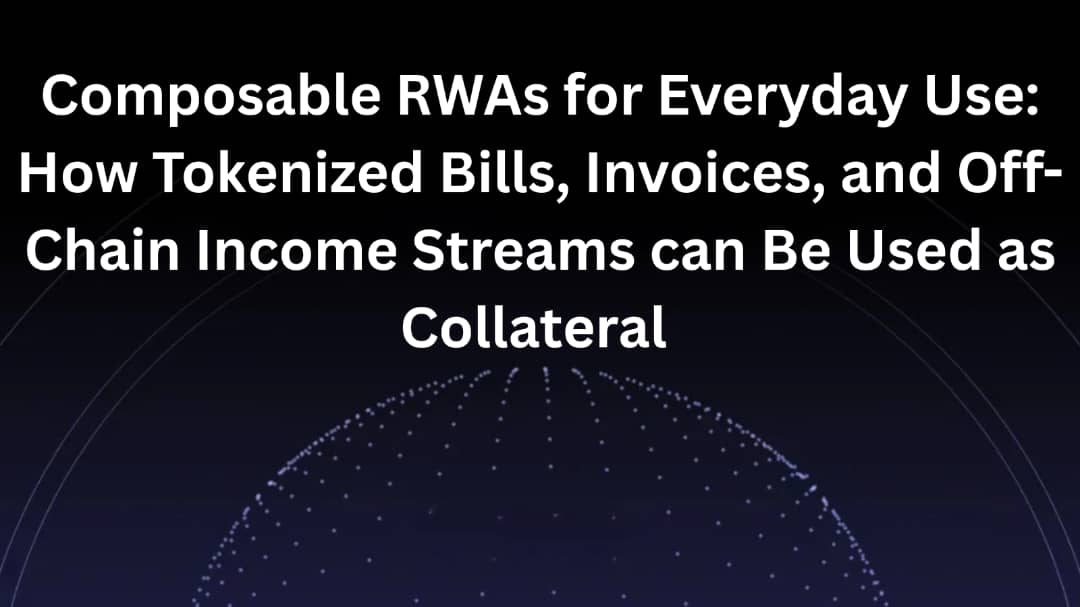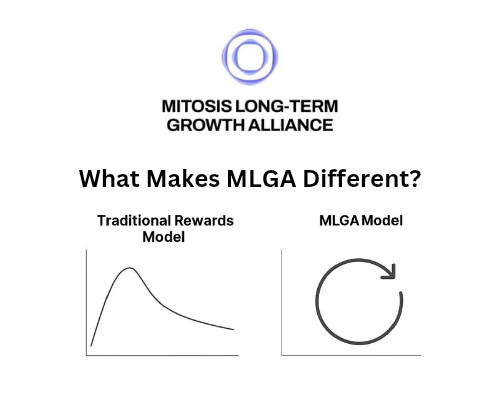Composable RWAs for Everyday Use: How Tokenized Bills, Invoices, and Off-Chain Income Streams Can Be Used as Collateral

Introduction
The financial landscape is undergoing a significant transformation with the advent of blockchain technology and decentralized finance (DeFi). One of the most promising developments in this space is the concept of Composable Real-World Assets (RWAs). These assets, which include tokenized bills, invoices, and off-chain income streams, can be utilized as collateral in various financial applications. This article delves into the mechanics of composable RWAs, their practical applications, and the implications for everyday users, including tokenized payroll, creator revenue, and e-commerce sales.
1. Understanding Real-World Assets (RWAs)
Real-World Assets (RWAs) refer to tangible or intangible assets that exist in the physical world but can be represented digitally on a blockchain. Examples include real estate, commodities, invoices, and even future income streams. The tokenization of these assets involves creating a digital representation of the asset on a blockchain, allowing for easier transfer, ownership verification, and liquidity.
1.1 The Importance of Tokenization
Tokenization offers several advantages:
- Liquidity: By converting RWAs into tokens, they can be traded on various platforms, increasing their liquidity.
- Fractional Ownership: Tokenization allows for fractional ownership of high-value assets, making them accessible to a broader audience.
- Transparency: Blockchain technology provides a transparent and immutable record of ownership and transaction history.
- Efficiency: Smart contracts can automate processes, reducing the need for intermediaries and lowering transaction costs.
2. Composable RWAs: A New Paradigm
Composable RWAs take the concept of tokenization a step further by allowing these assets to be integrated into various DeFi applications. This composability means that tokenized assets can interact with other financial instruments and protocols, creating a more dynamic and interconnected financial ecosystem.
2.1 Key Components of Composable RWAs
- Tokenized Bills and Invoices: Businesses can tokenize their receivables, such as bills and invoices, allowing them to access liquidity before the payment due date. This can be particularly beneficial for small and medium-sized enterprises (SMEs) that often face cash flow challenges.
- Off-Chain Income Streams: Income streams from various sources, such as payroll or creator revenue, can be tokenized. This allows individuals to use their future earnings as collateral for loans or other financial products.
- Interoperability: Composable RWAs can interact with various DeFi protocols, enabling users to leverage their assets across different platforms. This interoperability enhances the utility of tokenized assets and creates new financial opportunities.
3. Practical Applications of Composable RWAs
1. Tokenized Payroll
Tokenized payroll represents a significant innovation in how employees receive their compensation. By tokenizing payroll, companies can offer employees the option to receive their salaries in digital tokens. This approach has several benefits:
- Instant Access to Funds: Employees can access their earnings immediately, rather than waiting for traditional payroll cycles. This can be particularly advantageous for those living paycheck to paycheck.
- Integration with DeFi: Employees can use their tokenized salaries as collateral for loans or invest them in various DeFi protocols, enhancing their financial flexibility.
- Global Accessibility: Tokenized payroll can facilitate cross-border payments, allowing companies to hire talent from anywhere in the world without the complexities of traditional banking systems.
2. Creator Revenue
The rise of the creator economy has led to new revenue streams for content creators, artists, and influencers. Tokenizing creator revenue can provide several advantages:
- Access to Capital: Creators can tokenize their future earnings from platforms like YouTube, Patreon, or Twitch, allowing them to access capital upfront. This can help them invest in new projects or cover living expenses.
- Decentralized Funding: By tokenizing their revenue, creators can raise funds directly from their audience through crowdfunding mechanisms, bypassing traditional funding sources.
- Ownership and Control: Tokenization allows creators to maintain ownership of their revenue streams, ensuring they receive a fair share of their earnings without intermediaries taking a cut.
3. E-Commerce Sales
E-commerce businesses can also benefit from composable RWAs by tokenizing their sales invoices. This approach can streamline cash flow management and enhance liquidity:
- Immediate Liquidity: E-commerce businesses can tokenize their sales invoices and sell them on secondary markets, gaining immediate access to cash instead of waiting for customers to pay.
- Risk Mitigation: Tokenizing invoices can help businesses mitigate the risk of non-payment by providing a more secure and transparent way to manage receivables.
- Integration with Supply Chain Finance: Tokenized invoices can be integrated into supply chain finance solutions, allowing businesses to optimize their working capital and improve supplier relationships.
4. The Technical Framework of Composable RWAs
1. Blockchain Technology
The backbone of composable RWAs is blockchain technology, which provides a secure and transparent environment for asset tokenization. Key features include:
- Smart Contracts: These self-executing contracts automate processes and enforce agreements without the need for intermediaries. Smart contracts can facilitate the issuance, transfer, and management of tokenized assets.
- Decentralized Storage: Tokenized assets can be stored on decentralized networks, ensuring that ownership records are secure and tamper-proof.
- Interoperability Protocols: Protocols like Ethereum, Polkadot, and Cosmos enable different blockchains to communicate and interact, enhancing the composability of RWAs across various platforms.
2. Token Standards
Token standards play a crucial role in the functionality of composable RWAs. The most common standards include:
- ERC-20: This standard is used for fungible tokens on the Ethereum blockchain, allowing for the creation of tokens that can represent various assets, including RWAs.
- ERC-721 and ERC-1155: These standards are used for non-fungible tokens (NFTs), which can represent unique assets or fractional ownership of RWAs.
- Cross-Chain Standards: Emerging standards like the Inter-Blockchain Communication (IBC) protocol enable the transfer of assets across different blockchains, enhancing interoperability.
5. Challenges and Considerations
While composable RWAs present numerous opportunities, several challenges must be addressed:
1. Regulatory Compliance
The regulatory landscape surrounding tokenized assets is still evolving. Businesses and individuals must navigate complex legal frameworks to ensure compliance with securities laws, anti-money laundering (AML) regulations, and know-your-customer (KYC) requirements.
2. Valuation and Pricing
Determining the value of tokenized RWAs can be challenging, especially for assets that do not have a clear market price. Establishing reliable valuation mechanisms is essential for ensuring fair pricing and mitigating risks.
3. Security Risks
The security of tokenized assets is paramount. Smart contracts can be vulnerable to exploits, and users must take precautions to protect their private keys and digital wallets.
4. Market Adoption
For composable RWAs to gain traction, widespread adoption is necessary. This requires educating users about the benefits and functionalities of tokenized assets and building user-friendly platforms that facilitate their use.
6. Future Outlook
The future of composable RWAs is promising, with several trends likely to shape their development:
- Increased Institutional Adoption: As more institutions recognize the value of tokenized assets, we can expect increased investment and participation in the RWA space.
- Enhanced Interoperability: Continued advancements in interoperability protocols will enable seamless integration of tokenized assets across different platforms and ecosystems.
- Innovative Financial Products: The emergence of new financial products and services built on composable RWAs will create additional opportunities for users to leverage their assets.
- Regulatory Clarity: As regulators develop clearer guidelines for tokenized assets, businesses will have a better framework for compliance, fostering greater confidence in the market.
Conclusion
Composable RWAs represent a significant advancement in the financial landscape, offering innovative ways to leverage everyday assets like bills, invoices, and income streams. By tokenizing these assets, individuals and businesses can access liquidity, enhance financial flexibility, and participate in the growing DeFi ecosystem. As the technology matures and regulatory frameworks evolve, the potential for composable RWAs to transform the way we interact with financial instruments is immense. Embracing this new paradigm will empower users to take control of their financial futures and unlock new opportunities in the digital economy.

Comments ()